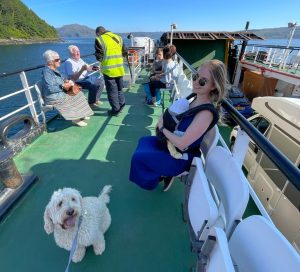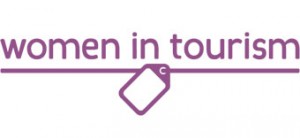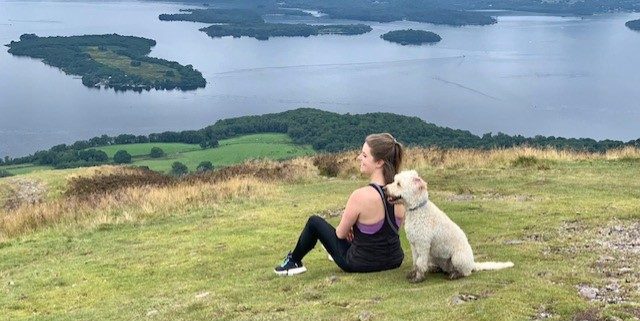Women to write home about: Cat Leaver
In the latest in our Women to Write Home About series, we caught up with Cat Leaver, Head of Brand & Global Marketing at VisitScotland. Cat shares her background and what brought her to work for the national tourism agency; as well as highlight the opportunities for Scottish tourism in 2024.
Tell us about your background, skills and experience
As a Scot and a marketer, I feel incredibly lucky to be able to do what I do. To focus my energy on sharing Scotland’s stories with the world and on making tourism a real force for good, feels like both a worthy and a thoroughly enjoyable endeavour. And, perhaps, I’m biased, but I really do feel like we have the best brand to work with. It’s easy to look good with a brand like Scotland, and with colleagues as passionate and experienced as those at VisitScotland and from across our industry.
Having studied International Business and Modern Languages at the University of Strathclyde, including a year in Spain studying at the Universitat Autonoma de Barcelona, I entered the world of marketing at a time when ‘digital’ was still in its relative infancy and ‘digital marketing’ was exploding across new channels and delivery models. So, after starting in a fairly traditional company (a solid foundation where I also learned a lot), I was excited to delve into the world of digital agency. I spent over seven years agency side, and it was a steep but agreeable learning curve. There, I developed a multitude of new skills and was given a degree of autonomy that allowed me to identify where my craft really lay, which it turned out was the intersection of strategy and marketing. I loved working with businesses of all shapes, sizes and sectors on big digital transformation and strategy projects. It gave me unprecedented access to interesting business leaders and their inner workings. I revelled in digging into what made a great brand, a great organisation and a great customer experience. And, I was fascinated by both the technical and very human challenges around which we explored solutions.
Outside of work, my family lived for some time in various African countries, with me spending the first year or so of my life in Zambia before returning to the Scottish Borders and then moving to Glasgow at 17. I come from a long line of family on both sides who have lived overseas and speak various languages, and so travel and interacting with people from different cultures has always been something I cherish.
During my time agency si de, I also got to work with a variety of travel and hospitality clients which piqued my interest in working in the tourism and place brand space.
de, I also got to work with a variety of travel and hospitality clients which piqued my interest in working in the tourism and place brand space.
I joined the public sector in 2018 in the very exciting role of Director of Brand Scotland, where I worked with colleagues across Scottish Government, Scottish Enterprise (Scottish Development International), Universities Scotland and VisitScotland, on how we strengthened our nation’s global identity and reputation with the ultimate aim of economic prosperity. And this was also the beginning of my journey with VisitScotland. My role today involves working across our creative and marketing teams to design and develop compelling brand and marketing initiatives that help us to share Scotland’s stories with the world.
Beyond work, I’m proud to be an ambassador for the Prince & Princess of Wales Hospice, which is an incredible charity offering care for people living with life-limiting illnesses. If you’ve never heard of them, they’re well worth checking out as an example of innovative business practice, exceptional fund-raising strategy, a state-of-the-art facility and passionate people.
What are the biggest challenges for Scotland as a tourism destination just now?
Tourism right now is fiercely competitive. Destinations around the world are investing more than ever for a share of the global tourism pie.
For Scotland, tourism is a cornerstone of our economy, yet it’s facing some of its biggest challenges in an uncertain macroeconomic environment. Operating costs continue to rise in line with inflationary pressures and businesses, particularly those in more remote locations, continue to face challenges around staff recruitment and retention. And, for consumers, whilst some benefit from favourable exchange rates, in the UK – our largest market by volume of visits – the cost-of-living crisis continues to impact domestic consumer confidence and spending. All of this has a compounding impact, meaning some businesses have to reduce their service offering, therefore limiting supply from the industry.
However, there remains much opportunity. Demand for tourism remains largely positive. International visits are up and global data suggests consumers will continue to prioritise spend on travel. Package bookings remain particularly strong in some of our large inbound markets. And there are some positive indicators at home as well – as the cost of holidays worldwide continue to increase, the appeal of a staycation only grows. It’s worth noting that the impact of the cost-of-living crisis is not uniform and there are segments of our domestic market who remain less affected, including retirees.
And the level of collaboration demonstrated throughout and in response to the pandemic has been deeply heartening. We’ve seen innovative new experiences and products introduced to the market and considerable growth in our sector offerings, including agritourism, outdoor adventure, and food and drink tourism.
When you look ahead to 2024, what do you feel the biggest opportunities are for Scottish tourism will be?
Collaboration will remain key as we seek to maximise collective resources and identify innovative ways to drive greater value for and from our visitor economy. This will particularly come to the fore as we seek to identify more ways to drive sustainability, like local and community-based partnerships and supply chains.
Global trends data show travellers plan to continue prioritising leisure travel into 2024, meaning there remains high levels of intent and with this, consumers state they will pay for more personalised, unique experiences – something Scotland can offer in abundance.
Forward booking is key for many international markets, with recent TripAdvisor data suggesting some 67% of their audience book most of their activities before they arrive, further reinforced by year on year growth in Scottish experience bookings via Expedia. And partner data also shows that trip planning and research windows are growing. This means we need to be reaching consumers and inspiring them early in their visitor journey, not just on where to go but also allowing us the opportunity to influence what they do whilst in Scotland.
The return of markets that previously delivered high volumes of visitors to Scotland like China, as well as the emergence of new visitor market pipelines particularly from other short haul markets, present growth opportunity.
Consumer and booking trends are showing increased interest in multi-generational trips, presenting new value add opportunities to tourism businesses with more heads per booking and an increased demand for activities to suit all. And the continued rise of ‘bleisure’ trips – business mixed with leisure – presents opportunity to capture business travellers, elongate their stay whilst in Scotland, and cater to their travel partners/families.
On the ground, initiatives like the ScotRail Peak Fares Removal Pilot from the Scottish Government demonstrate real commitment to getting people moving around via more sustainable public transport. But they also make travel far more affordable for many, encouraging greater levels of exploration across our country. This combined with a fantastic range of free and low-cost attractions offers opportunity to bolster day trips and domestic tourism, as well as facilitating greater spread of international visitors when in Scotland.
What are your three top leadership tips for women in the industry?
- Be humble – no one person has all the answers and there is real strength in remaining open, curious, and humble. It is through asking questions and welcoming diverse perspectives that we identify the most innovative and rounded solutions. And its why successful leaders always talk about ‘hiring smarter’ and ‘active listening’.
- Find what makes you tick – understanding what gets your creative juices flowing and where your passion lies will help you identify paths that not only feel right for you, but also where you add the most value. An engaged leader is a far more effective one. So, ask yourself what is your purpose and what are you passionate about?
- Be present and available – being visible, transparent and clear will earn and instil confidence from others. They will know who to turn to and have a level of clarity in your vision and direction. And it will allow you to build a core level of understanding and trust that is essential to high performing teams.
And remember, it is not being a woman that dictates (or limits) your success. It’s what you do.



